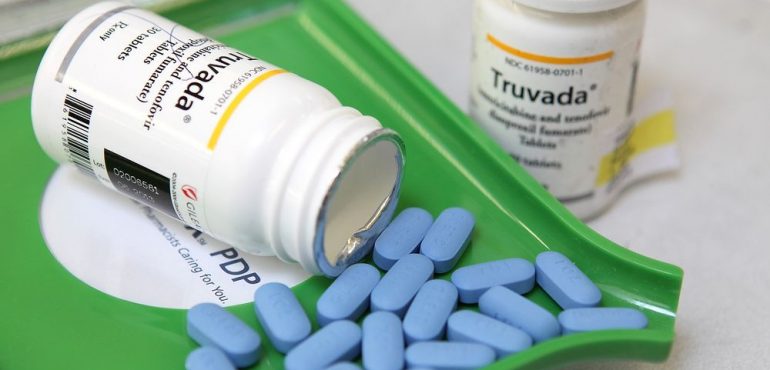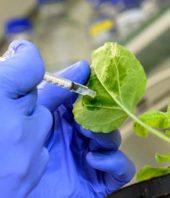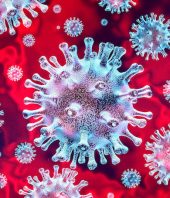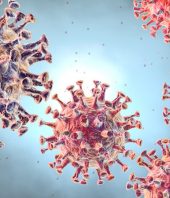Kyle, a 29-year-old Sydneysider, never knew a time when HIV wasn’t a persistent and pernicious threat — until he began popping a pill to prevent it.
The blue, oval-shaped antiviral tablet, known as Truvada, that Kyle takes daily is the subject of a study in Australia’s New South Wales state that, in less than a year, has helped drive new cases of the AIDS-causing human immunodeficiency virus among gay and bisexual men to the lowest since 1985.
“It feels good to be a part of that,” said Kyle, a retail assistant who joined a program called pre-exposure prophylaxis, or PrEP, in January to ease his fear about being infected with HIV during sex on the occasions he doesn’t use a condom. “I do feel a lot safer.”
Thirty-six years after a rare lung infection in gay men in Los Angelesheralded the start of the AIDS epidemic in North America, the deadly disease is firmly in retreat globally. For the first time, more than half of all people living with HIV are on virus-suppressing treatment that staves off symptoms and prevents transmission. And thousands of people are using Gilead Sciences Inc.’s Truvada in the form of PrEP, curbing the spread in communities from London to San Francisco.

PrEP reduces the risk of HIV from sex by more than 90 percent if the pill — a fixed-dose combination of the drugs tenofovir disoproxil and emtricitabine — is taken daily. As cheaper, generic versions of Truvada made by Mylan NV, Cipla Ltd. and Teva Pharmaceutical Industries Ltd.become more widely available, doctors and public health researchers are testing its ability to slash HIV incidence in the developing world, especially sub-Saharan Africa, where it’s mostly transmitted by heterosexual sex.
Impact in Africa?
“The global epidemic is driven in eastern and southern Africa, and it’s driven predominantly among women,” said Mitchell Warren, executive director of New York-based advocacy group AVAC, which tracks more than 40 ongoing and planned PrEP studies across the world. “To really end the global epidemic, we have got to figure out if oral PrEP can have an impact in Africa like it can in other places.”
HIV diagnoses at the U.K.’s busiest sexual health center — London’s 56 Dean Street clinic in Soho — plunged 42 percent last year, and in San Francisco they have halved since PrEP was approved by the Food and Drug Administration in July 2012.

“You see this very dramatic decline in new infections that wasn’t seen just when we were treating people,” said Sharon Lewin, director of the Peter Doherty Institute for Infection and Immunity in Melbourne and a member of the International AIDS Society’s governing council.
Gilead counted 136,000 people taking Truvada as PrEP at the end of the second quarter, compared with 60,000 to 70,000 a year earlier. That’s still a fraction of the 1.2 million American adults at significant risk of becoming HIV-positive who researchers at the Centers for Disease Control and Prevention say are candidates for the regimen.
Profitable Pill
Preventative treatment now accounts for about half of the pill’s U.S. sales, Kevin Young, Gilead’s chief operating officer, said in July. The 13-year-old medication’s sales reached $3.57 billion in 2016, accounting for almost 12 percent of revenue for the Foster City, California-based company.
“It certainly represents a growth opportunity in the U.S. — until generics hit,” said Asthika Goonewardene, a biotechnology analyst with Bloomberg Intelligence in New York. “Beyond the societal benefit, this is an old drug, and even with the likely discounts and rebates to ensure coverage, the margin is good and a volume play is very lucrative to Gilead’s earnings.”

Gilead doesn’t expect competition from generic versions of Truvada in the U.S. until 2021, Chief Executive Officer John Milligan said last month. Patent protection means that the medicine costs about $17,258 per person a year in the U.S., Andrew Hill, a senior visiting research fellow in the pharmacology department at Liverpool University, and colleagues told the International AIDS Conference in Paris in July. That compares with an annual cost of about $67 per person for a generic version in India.
Truvada’s patent expired on Aug. 1 in Australia, but a panel advising the government there deferred making a recommendation to subsidize either the Gilead brand-name product or Mylan’s generic version for PrEP, pending further information on its cost-effectiveness.
While “PrEP appeared to be effective in reducing the transmission of HIV,” Truvada wasn’t cost-effective at the price Gilead requested, the Pharmaceutical Benefits Advisory Committee said in a statement Friday. The company’s submission estimated annual expenditure of more than A$200 million ($158 million) in five of six years, the panel said, adding that it considered that “the opportunity cost was unacceptably high.”
Cheaper Generics
Without any government subsidy, PrEP costs about A$1,000 a month in Australia for users who aren’t participating in a study. Generics can be bought online in the U.K. from about 50 pounds ($64) a month.
“Once it comes off patent, you are going to wind up a getting a much larger use of it,” said Anthony Fauci, director of the National Institute of Allergy and Infectious Diseases in a telephone interview. “It will be more accessible from an economic standpoint.”
While that will help drive down the prevalence of HIV, it may also have some less desirable effects.
Kyle, the PrEP participant in Sydney, said he had one bout of chlamydia in his first six months on the program and admits his condom usage has gone from “sometimes” to “rarely.”
“To be honest, it’s not a big increase in my experience of STIs — not to say that I was constantly catching things,” he said.
Another difference now is that Kyle is being screened quarterly for infections as per PrEP guidelines, which means any disease will be treated sooner — reducing the risk of him passing it on — than if he stuck with his usual schedule of a checkup every six-to-nine months, he said. The tests also check for a small risk of kidney damage from Truvada and allow doctors to monitor for a decrease in bone density known to occur in some people after taking PrEP for a few years.
‘Queer Warrior’
“No one should be surprised if STI numbers could potentially go up a bit before they go down because you are, for the first time ever, screening people appropriately,” said Demetre Daskalakis, deputy commissioner for disease control with the New York City health department, in a telephone interview.
Based on a health department survey, about 30 percent of men ages 18 to 40 who have sex with men are on PrEP — and the benefits of it outweigh any risks, according to Daskalakis, who calls himself a “queer health warrior” and posed bare-chested in posters on the New York subway for a campaign in June to encourage citizens to find a new doctor if they can’t talk openly about their sex lives. New HIV infections among gay and bisexual men fell 10 percent in 2015, the biggest annual drop in New York City’s history of the epidemic.
Beyond the medical benefit of PrEP, the preventative treatment encourages people to talk more openly and confidently about their sexual health and HIV in particular.
“If anything, I have more conversations about people’s statuses,” said Kyle. “It gives me confidence to say, ‘I am on PrEP. Where are you at?’”
Source: Bloomberg, Full Article






